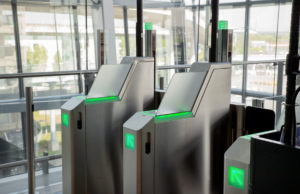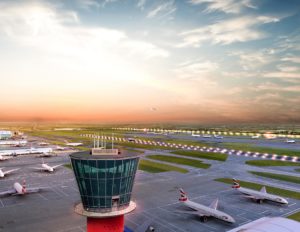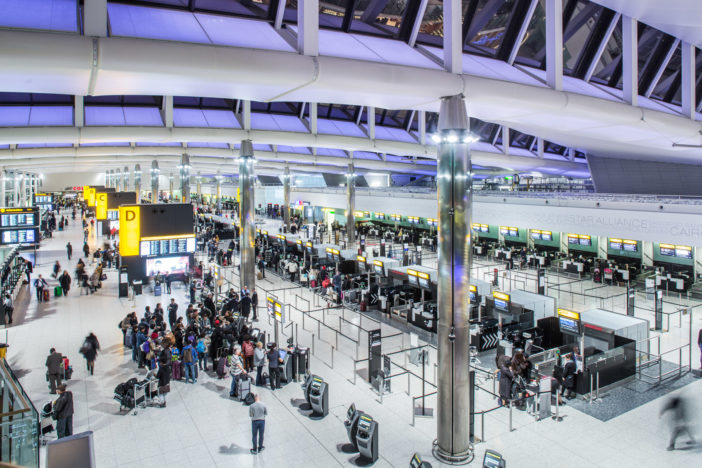John Holland-Kaye, CEO of London Heathrow Airport, discusses progress on its new runway and looks ahead to investments in tech and sustainable initiatives.
How is Heathrow performing at the moment?
Heathrow is about to wrap up another landmark year. We are consistently improving services and delivering better value for money. As a result, a record number of passengers are choosing to fly from Heathrow [78 million in 2017 – up from 75.7 million in 2016]. We were again more voted the Best Airport in Western Europe by Skytrax, and Condé Nast Traveler’s readers rated us the best airport in the world for 2018.
Our service transformation is down to the outstanding team across Heathrow. I think the people that work at Heathrow are what makes the difference, and I am very proud that our team is constantly striving to give passengers the best airport service in the world. We use a range of passenger research to find out what we need to improve and work with our partners to make things better. This year we have made good progress in three critical areas – connections, special assistance for passengers with reduced mobility and hidden disabilities, and immigration.
And of course, in June 2018 Parliament voted overwhelmingly in support of Heathrow’s expansion, and we are now getting on with delivering the new runway.
What key areas are you investing in?
We are developing plans to serve more passengers from our current terminals, to meet demand before the new runway opens. We are pioneering new security screening technology, which would allow passengers to keep laptops and liquids in bags. We have also been working with IATA to develop an end-to-end biometric journey through the airport. Trials are still underway and in early stages, but we are planning to roll this out to passengers from the summer of 2019. The £50m (US$66m) investment will help to bring biometric authentication to every stage of the departing passenger’s journey, from check in, to bag drop, all the way to the departure gate. Currently passengers need to keep producing their passports and boarding cards at each touchpoint in their journey to prove their identify, but with this change, facial recognition will be used throughout the airport, potentially cutting journey times by a third.

Furthermore, as part of our Heathrow 2.0 plan for sustainable growth, we are working to reduce the impact of aviation on the climate. We incentivize airlines to bring their cleanest and quietest aircraft to Heathrow, and have recently announced a prize worth up to £1m (US$1.3m) for the first commercial electric-hybrid aircraft. We are also converting all of our vehicle fleet at the airport to electric or hybrid – not just cars, but HGVs and even fire tenders.
What single piece of technology has had the biggest impact on the passenger experience?
For Heathrow it is our Airport Operations Centre (APOC). We opened APOC in 2014 and it is the nerve center of our whole operation. APOC brings all the data around the airport together and is able to see the complete Heathrow picture – offering the right information to the right people at the right time, which ultimately enables our front-line colleagues to be more proactive and effective. Multiple stakeholders are represented in APOC, including airlines, NATS, UK Border Force, the Metropolitan Police and the Highways Agency, which keeps everyone in the loop with the most up-to-date information, making us more flexible and resilient. As APOC comes into its own, passengers will continue to experience smoother, easier journeys, even on days when there are disruptions.
Other new technologies are also starting to make an impact on the passenger experience, among them digital engagement tools that keep passengers informed about operations. Our new Amazon Alexa Skills means customers can receive instant information about live flight times even from the comfort of their own homes. We’ve also partnered with LocusLabs and Apple to enhance our digital terminal maps, helping customers to navigate the airport and find the amenities, restaurants, retail and offers that are closest to them at any given time. Finally, we now offer a pre-order food service to passengers, which enables them to enjoy the fantastic range of dining options regardless of time constraints.
What stage is the new runway project at?
Following the UK Parliament’s landmark vote in 2018 [to build a third runway at Heathrow], we are moving ahead with the delivery of our expansion plans. Ground investigations are currently underway at sites surrounding the airport. We are making excellent progress in developing a masterplan that takes into account feedback from local communities, airlines and passengers. We will hold a formal consultation on this next year and submit our planning application in 2020.

Earlier this year we also completed our nationwide tour of potential sites for logistics hubs – sites that will help us carry out much of the expansion of Heathrow off-site. We will announce the shortlist next year. We also now have a longlist of potential expansion innovation partners that will bring fresh thinking to our plans, helping us deliver expansion in a way that maximizes passenger experience but is cost-efficient and sustainable.
We are on track for the new runway to open in 2026. Construction will begin once we receive government permission.
We will increase capacity on a phased basis, to match demand. We will focus development on our main terminals, 2 and 5, which will make it easier for passengers to connect and complete their onward journeys, thanks to easy access to public transport.
Why do you believe the UK government backed the third runway over other schemes?
Parliament’s historic vote on expansion is the end of a 50-year debate and followed a rigorous, evidence-based selection process that included an independent expert review by the Airports Commission. With up to 40 new long-haul trading links, double the cargo capacity, more competition and choice for passengers and new domestic flights, an expanded Heathrow will make Britain the best-connected country in the world and sends the strongest signal possible that Britain is open for business.
Over the past six years we have worked with neighboring communities to design an expansion plan that will treat local people fairly. In addition to the thousands of new jobs the project will create for local residents, Heathrow has also committed to delivering a world-class compensation package, plans to implement a 6.5 hour-long ban on scheduled night flights and has plans in place to improve sustainable transport into the airport to ensure it meets air quality obligations.
How will you minimize the impact of construction works?
We are revolutionizing the way we construct the terminals, aprons and runway, ensuring that as much as possible is built off-site at logistics hubs outside London and the South East, creating jobs in all corners of the UK. For construction that has to be on-site, we are working with the surrounding boroughs and our supply chain to ensure that we create as many skilled construction jobs as possible for local people.

We have strong support for expansion from many of our local communities. We have developed our plans by listening to their concerns, for example over noise, air quality or congestion, and have developed robust plans to address them. As part of our proposal prior to Parliament’s vote, we pledged to deliver skilled jobs and careers for local people, including 10,000 apprenticeships by 2030. Our skills taskforce, led by former UK Home Secretary David Blunkett, has developed a plan to achieve this. The latest polling confirms that more local people support Heathrow’s expansion than oppose it. We will continue to work closely with local people to address their concerns as we go through the planning and construction process and bring the new runway into operation.
What do the next five years hold for Heathrow?
In five years’ time I expect we will see continued improvement in passenger service, and continued reduction in costs. The opening of Crossrail [a 118km (73-mile) railway line under development in London], and then a western rail link and HS2 [a new high-speed rail line connecting London with northern UK cities] will make it easier for passengers and airport workers to get to Heathrow. We will have new hotel and retail offerings to enhance the central terminal areas. We will also have secured planning permission and be well on our way to building our additional runway infrastructure.
We will continue to enhance the passenger experience. One area in which we can achieve this is retail. Retailers up and down the country are awakening to the demand of passengers not only to buy goods, but to experience something alongside that purchase. A number of our own retailers have already picked up on this trend. For example, last year in Terminal 2, Burberry had a hot air balloon display that our passengers were able to interact with. Experiences can add value to our service without necessarily coming at a premium cost.
London Heathrow is the official host airport of this year’s Passenger Terminal Expo and Passenger Terminal Conference. Both take place on March 26, 27 and 28, 2019, in London. John Holland-Kaye will give an opening address on the first day.
This article was first published in the January 2019 edition of Passenger Terminal World magazine.
